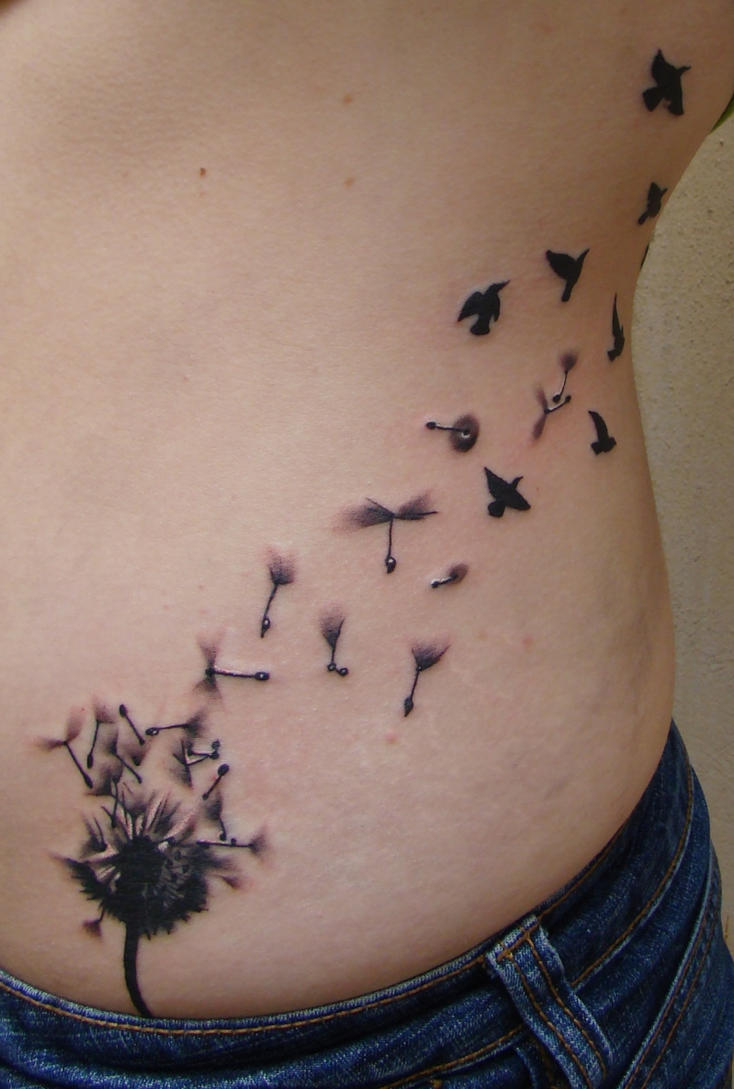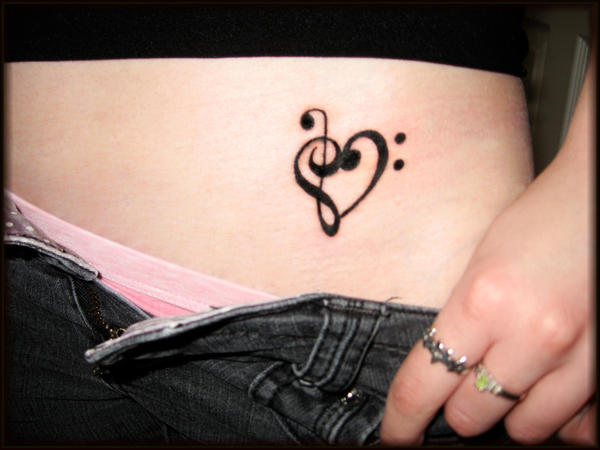Not all tattoo changes can be fixed with a touch-up, though. Stretch marks are a good example, depending on the color of the stretch marks and the effect that the lack of elasticity in the skin has meant to the overall design of the tattoo. Only a visit to a tattoo artist will let you know. Likewise, a tattoo that has blurred may not be a good candidate for a touch-up.
Ironically, though, if the tattoo continues to blur at an accelerated rate (for whatever reason) it may enter into touch-up territory sooner rather than later.In a perfect world, everybody who wants a tattoo gets one and everybody who gets one likes it forever. Tattoos and people change, though, and not all tattoos are created equal. In some instances, people, their tattoos, and their tattoo design choices change to the extent that removing the tattoo entirely is the most desirable choice. This article acknowledges the obvious fact that some people will want their tattoos touched up, fixed, covered, removed, and even some combination of these. It offers information on all of these different approaches to changing a tattoo, including which approach is best suited to the different types of tattoos and the typical scenarios where tattoo changes are wanted.
Touched
Tattoo touch-up is part of the course of business, and some tattooists are constantly getting their own tattoos touched up in order to keep them looking fresh and great, sort of like hairdressers constantly doing each other's hair. A touch-up can take care of a variety of issues that may arise in a tattoo, although holidays (see chapter 3) spring to mind as the obvious candidate for this type of fix. Because small holidays am generally such a minor touch-up, many tattoo artists won't charge for them. It's always best to go back to the same tattooist who did your tattoo for the touch-up. You'll be assured of the same inks (composition and color) and workmanship. If you chose your tattoo artist wisely, then you have some amount of rapport with him or her as well.
Although tattooees may find it hard to believe, tattooists are aware of the amount of pain that their clients experience. First, of course. most tattoo artists are heavily tattooed themselves. They know firsthand what being tattooed is all about, much more so than the vast majority of their clients. Second, experienced tattooists can gauge the level of the tattooee's anxiety or pain by the way their skin acccepts the ink. Without your knowing it, your body is reacting to your psychological and emotional state and creating real effects such as tightening in your skin.
Tattoo artists are also aware of your breathing and, of course, the expression on your face. At some point, for a small percentage of tattoo clients, the better part of valor is to call the tattoo done—for the day. Minor touch-ups that can be done later, perhaps minor gradations in shading, a more solid line in a sensitive area, or maybe just a bit more ink in a spot that had been glossed over, are sometimes best left to a second visit. Then again, if you never came back, these aren't necessarily the kinds of touch-ups that make or break a great tattoo.
A touch-up is something that can sometimes help a faded tattoo. Because different tattoo inks break down at different rates, not all colors fade at the same speed. If the rest of a tattoo is still fairly fresh and only the red needs to be darker in small areas, maybe the red in a snake's eyes, for example, a tattoo artist can put new red over the old, doing his or her best to blend the red colors. The same goes for any color, of course, including the outline. If your entire tattoo has faded, it's not a touch-up; it's a complete redo.
Redo
For people who've exposed their tattoos to the ravages of the sun or who simply have had their tattoos for decades, there comes a time when a redo might be the most attractive alternative. Once skin has been tattooed, however, it is never the same. To tattoo over it again will likely be more difficult, and it is also likely to produce a different result, even if that difference is barely discernible. Even so. one effect of a complete redo for a tattoo is not only that the vibrancy of a new tattoo is achieved, but occasionally the tattoo also takes on a unique sense of depth and shading that only conies from the presence of all those different pigment molecules in close proximity to one another, old and new. They don't mix per se, but the old tattoo still exists in the background.
Mr. Fix-It
Nobody wants to hear that there are some less-than-competent tattooists out there doing tattoos, but there it is. Lines in the outline may cross where they're not supposed to, or may not meet. Uneven color may abound. Straight lines aren't straight and curved lines don't have a perfect curve. Most people on the street couldn't draw a perfect star to save their lives, but that's exactly what we want from a tattoo artist. And although we may not be able to draw one ourselves, we know immediately when one doesn't look right. In the case of tattoo fixes (need I really say this?) you probably shouldn't return to the same tattooist. A competent tattoo artist should be able to tell you exactly what he'd be able to do for you when he sees your tattoo fix candidate. Experienced tattooists can do a lot with shading and solid lines to improve a bad tattoo.
Let's go briefly back to the blurrier. A blurred tattoo can happen for different reasons (see the last chapter). Can it be fixed? In most cases, not until the tattoo has blurred so much that a new color on top will stand out as separate from the old (and generally we're talking about the black outline). Tattooing white ink over the old tattoo doesn't work for several reasons. The old pigment doesn't go away, for the most part. it's already captured in fibroblasts in the dermis. Some of the pigment may become dislodged and be taken away by the immune system, but very little. It's not like painting over an old layer. Instead, the white pigment will enter the dermas right alongside the black and the end effect will be a mingling of the two. Secondly, in the case of white, it never comes out white—and you know why by now. White pigment will end up in the dermis in order to be a tattoo. The epidermis will slough off and eventually replace itself entirely, creating a window of skin that you look through in order to see the tattoo. No skin is clear, not even close. Remember the old "flesh-colored" crayon in the box that never got used? It's not a fabulous color. Whatever the color of your skin, that's the color that you'd see in white tattoo pigment. So don't consider white an option for correcting a blurry outline. Your best bet there is time, a cover-up, removal, or a combination of these Crayola.
Cover-up
Ali, the cover-up, where the ingenuity and artistry of the tattoo artist is probably most harshly challenged and where the results can sometimes be nothing less than phenomenal. Cover-ups range from the small and simple to the large and ornate. According to a Harris poll conducted in 2002, the number one reason that people regretted their tattoo was the name in it. I've come down from my chapter 2 soapbox of preaching to the masses (or dozens anyway) that you should never get your significant other's name tattooed on your body. There was probably no point to such preaching anyway judging from the number of couples who flood tattoo shops on Valentine's Day. While Jude Law and Angelina Jobe took the removal route with their name tattoos, others took the cover-up route—Billy Bob Thornton ("Angelina" covered by an angel) and Johnny Depp ("Winona Forever- became "Wino Forever"). The name cover-up is probably the most common and simple one done.
Larger and more complex tattoos are another story. Reasons for covering a larger tattoo are as complicated as the reasons for getting one in the first place, plus the added issues of tattoo quality and changes in the circumstances of people's lives. However, as time goes by, dissatisfaction becomes action and although the tattooee still wants a tattoo. they don't want the one that they have. Perhaps their artistic taste changed and when the tribal rage of the nineties subsided they decided they wanted to have a portrait of Jesus done in a more conventional fashion. Perhaps the symbol that was chosen is simply no longer relevant: it's a prison tattoo, a gang tattoo, or they simply got tired of it. Any of these reasons, or a combination of them, can result in having one tattoo covered with another.
In general, tattoos are covered with larger tattoos that have dark areas in the design that correspond to the dark areas of the old design. That doesn't mean they have to be giant black squares, though. Far from it. Successful tattoo cover-ups give few clues that there was ever another design below them, instead drawing your attention to some eye-catching part of the new tattoo. On the best cover-ups, you'd really have to know what was there previously in order to be able to pick it out.
We'll leave cosmetic tattooing out of this since this type of tattooing is increasingly being performed by people licensed specifically for this type of work and is generally not done in tattoo studios. But aside from the cosmetic tattooing of vertiglio, eyebrows, eyeliner, and lip liner that make up the hulk of cosmetic tattooing, there is also the tattooing of scars.
Undoubtedly people with tattoos may eventually suffer some sort of trauma to their tattoo from an accident or surgery that creates a scar. 'That totally bites, especially when it ruins a great tattoo. But a scar can sometimes be covered andintegrated back into the overall tattoo design. Oilier times, people who have never been tattooed choose to have a scar tattooed. A bit screwball and grim at the same time is the familiar "cut along the dotted line" instruction with an arrow pointing to a dashed line on the surgery scar. Women who have had a mastectomy have been known to have their scar covered with flowing vines and flowers to add something positive to a reminder of something negative in the past. Scar tissue, however, is different from undamaged skin and may or may not tattoo well. Consult with both an experienced tattooist and your doctor if you're considering having a scar tattooed. By the way, aftercare procedures for any type of touch-up, redo, fix, or cover-up are exactly like those for a virgin tattoo.










